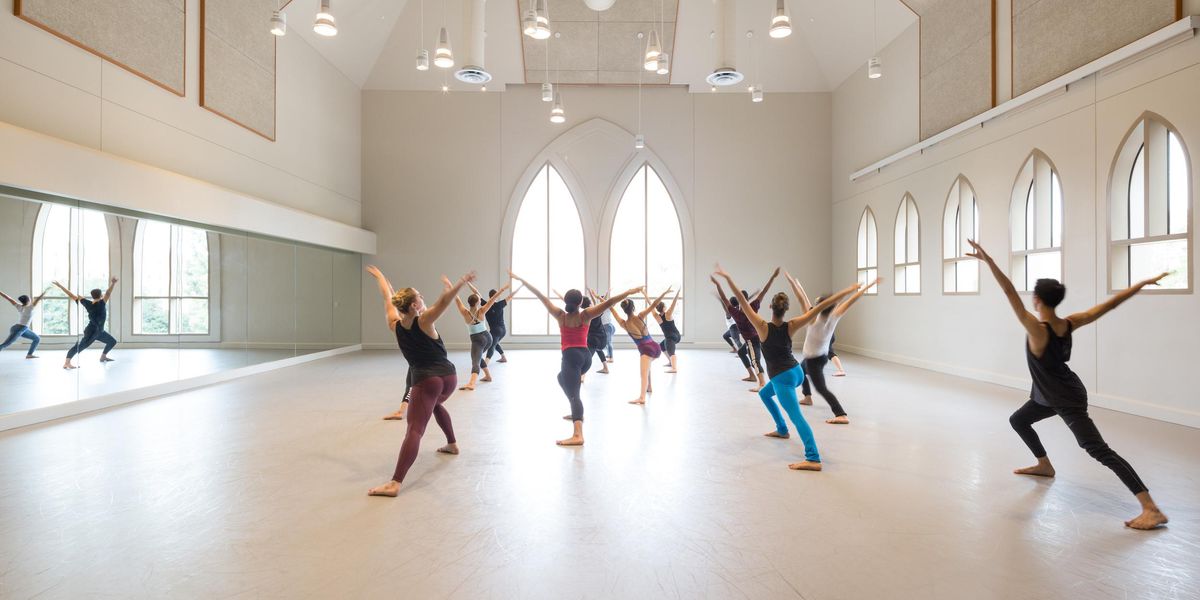Superstitious?
Backstage rituals might ease some dancers’ butterflies, but they shouldn’t run the show
“At BODYTRAFFIC, we simply cannot go on without a group circle!” – Tina Finkelman Berkett. Photo Courtney Paige, courtesy BODYTRAFFIC.
In the moments before the curtain rises, you can usually find Hope Boykin in an empty quick-change booth. Before going onstage, the longtime Alvin Ailey American Dance Theater member always takes a few moments to pray. It’s a ritual she follows regardless of the venue, the piece or who’s in the audience.
Rituals play a major role in many dancers’ pre-show routines. Even if they don’t consider themselves superstitious in the black-cat/number-13 sense, many dancers develop their own traditions, whether they swear by tying their left pointe shoe first or wishing a fellow dancer “merde.” By providing the illusion of control, these habits can help channel nervous energy into onstage magic. Researchers have even found a correlation between superstitions and improved performance. But rituals can backfire if dancers overly rely on them, believing they hold the power to make or break a show.
How Do Superstitions Work?
The power of the ritual lies in the mind of the believer. A 2010 article published in
Psychological Science reported that superstitions associated with good luck, like crossed fingers and lucky charms, can be correlated with improved performance, due to increased confidence. Researchers found that simply believing in the power of their chosen rite significantly boosted participants’ perceived confidence in their own abilities.
Even beyond the dance world, the consistency of rituals provides a sense of comfort. “People say, ‘I can’t function until I have toast and coffee.’ That’s ritualistic,” points out Boykin. “It doesn’t mean it’s an obsession; it just makes it something that you’ve found that works for you.” Familiar habits lessen anxiety by reminding the brain, I’ve been here before. The less mental energy you expend worrying about a performance, the more you have to devote to the performance itself.
Dr. Nadine Kaslow, who serves as Atlanta Ballet’s resident psychologist, adds that communal pre-performance rituals such as forming a circle with fellow dancers can serve a “soothing and calming and connecting” purpose.
When The Belief Backfires
Before a performance, dancers need to remain open to the unexpected. If executing exactly seven sun salutations takes priority over embracing last-minute changes, then it’s time to reevaluate how much mental weight you’re giving your superstition. “If rituals keep a dancer from getting to work, then they can be really problematic,” says Kaslow.
For Pacific Northwest Ballet corps member Steven Loch, ensuring as few repetitious rituals as possible is essential to his onstage success. At various points in his life, Loch has struggled with obsessive-compulsive disorder.
In order to minimize any negative effects on his dancing, he now strives for a “low-maintenance”
backstage routine, calmly applying his makeup and warming up his body. “I try to keep it open. That’s the best way for me to stay calm—just to go into my little space and not be bothered,” he explains. “If something is thrown off by the superstition or something goes wrong with it, I don’t want to have to be worrying about that for my performance.”
If your ritual is adding to, rather than alleviating, your pre-performance anxiety, Loch recommends letting it go little by little. “If you have two or three superstitions, start by not doing one of them,” he says. Take it out of your backstage prep until you feel comfortable performing without it, then take out the next. “Slowly build to the point where you don’t have any superstitions, and you’re in a place where you’re more in control.”
Find Your Own
Toeing the line between your urge to control the uncontrollable and simply being mindful in those final moments backstage—butterflies and all—is key. One way to achieve this happy medium, according to Kaslow, is to ask yourself what function your ritual serves: Does it mentally center or physically energize you? Allow you some much-needed alone time to quiet anxious thoughts? Honestly answering this question will allow you to pinpoint your personal pre-performance needs and brainstorm effective alternatives if your ritual is getting in the way of your best performance.
If you have a superstition that helps you, hold on to it. Of course, fellow dancers might find it foolish. But rather than second-guessing yourself, keep in mind that what works for you will not necessarily make sense to a fellow dancer with his or her own pre-performance needs—depending on past experiences and cultural or religious beliefs, rituals will hold different meanings for each dancer. When every performance must be danced as if for the first time, and countless hours of rehearsal amount to mere minutes in which to inspire an audience, who wouldn’t want to harness every strategy to gain self-assurance?
What’s Your Superstition?
“I roll out on my favorite softball and lip sync to Whitney Houston with my eyes closed—I have an entire Whitney playlist in a very specific order.” — Elisa Monte Dance’s Thomas Varvaro
“I have to be the last person to leave the dressing room, even if I’m already ready.” — Camille A. Brown & Dancers’ Yusha-Marie Sorzano
“I always leave an emergency pair of shoes on the side of the stage next to the rosin box. Sometimes one pair on both sides.” — Atlanta Ballet’s Tara Lee
“When I danced for Lar Lubovitch, he insisted on no whistling backstage! He said it would awaken the spirits sleeping.” — Ballet BC’s Brett Perry




